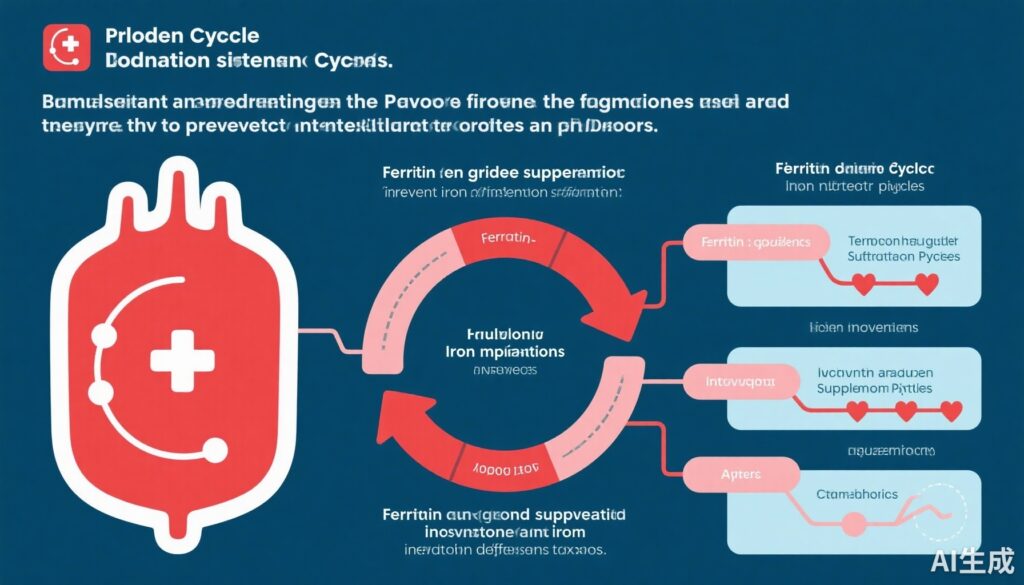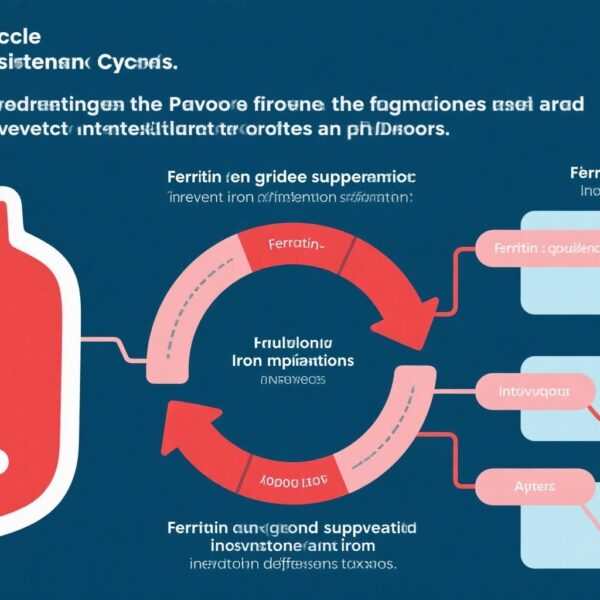Introduction
Vertebral fractures (VFs) constitute a common and debilitating consequence of osteoporosis in older adults, leading to pain, spinal deformity, and elevated risk of further fractures. Despite established roles for vitamin D in bone metabolism and the anti-inflammatory effects of omega-3 fatty acids, their effectiveness in preventing vertebral fractures remains uncertain. Additionally, exercise is hypothesized to strengthen bone and reduce falls, but direct evidence on its impact on vertebral fractures over extended periods is limited. The DO-HEALTH trial was designed to evaluate the independent and combined effects of vitamin D3 supplementation, omega-3 fatty acids, and a simple home exercise program (SHEP) on vertebral fracture incidence in community-dwelling older Europeans.
Study Design
DO-HEALTH was a multinational, double-blind, randomized controlled trial employing a 2×2×2 factorial design. The trial enrolled 2157 generally healthy adults aged 70 years and older from seven centers across five European countries, with a subsample of 1488 participants from four centers undergoing vertebral fracture assessment via lateral thoracolumbar dual-energy X-ray absorptiometry (DXA) scanning.
Interventions included daily vitamin D3 (2000 IU) versus placebo, daily omega-3 fatty acids (1 g as EPA/DHA) versus placebo, and a home-based exercise program (SHEP: 30 minutes, three times weekly) versus a control flexibility exercise program. Participants were followed for three years, with vertebral fracture outcomes assessed annually at baseline, 12, 24, and 36 months.
Participant Characteristics
Among the 1488 participants with baseline spine DXA, mean age was 74.9 years, 63.1% were female, and 77% had low bone mass or osteoporosis. Approximately 44% were vitamin D deficient (serum 25(OH)D <20 ng/mL), and 81% reported physical activity at least once weekly. The cohort was generally healthy without recent major health events, and adherence to intervention protocols was high, with over 78% taking ≥80% of study capsules and over 65% performing SHEP at least twice weekly by year 3.
Outcomes and Assessment
The primary endpoint for this analysis was the incidence rate (IR) of total osteoporotic vertebral fractures over three years, including both new fractures and progression of existing fractures. Vertebral fractures were identified and graded using Genant’s semiquantitative method on DXA images, with incident fractures defined as new deformities or worsening severity/progression of prevalent fractures. Analysis models adjusted for age, sex, prior falls, body mass index (BMI), study site, and exposure time.
Key Findings
Across 1369 participants with follow-up DXA data, 93 incident vertebral fractures were documented (58 new fractures and 35 progressions). Neither vitamin D3 supplementation nor omega-3 fatty acids showed significant reductions in the incidence rate of total vertebral fractures, new vertebral fractures, or fracture progressions compared to placebo.
Baseline characteristics of study participants.
| Vitamin D | Omega-3s | Exercise | ||||||||
|---|---|---|---|---|---|---|---|---|---|---|
| Characteristics | Overall (n = 1488) | Vitamin D (n = 742) | No vitamin D (n = 746) | P a | Omega-3s (n = 745) | No omega-3s (n = 743) | p | SHEP (n = 746) | Control exercise (n = 742) | p |
| Age [years], mean (SD) b | 74.9 (4.4) | 75.0 (4.4) | 74.9 (4.3) | 0.63 | 74.8 (4.2) | 75.0 (4.5) | 0.23 | 75.0 (4.4) | 74.8 (4.3) | 0.49 |
| BMI [kg/m 2 ], mean (SD) c | 26.6 (4.3) | 26.7 (4.4) | 26.50 (4.2) | 0.22 | 26.6 (4.2) | 26.6 (4.3) | 0.76 | 26.6 (4.3) | 26.5 (4.3) | 0.72 |
| Women, n (%) | 939 (63.1) | 473 (63.8) | 466 (62.5) | 0.61 | 471 (63.2) | 468 (63.0) | 0.93 | 469 (62.9) | 470 (63.3) | 0.85 |
| Comorbidity score, mean (SD) b , d | 3.4 (3.2) | 3.4 (3.2) | 3.3 (3.1) | 0.57 | 3.4 (3.3) | 3.3 (3.0) | 0.63 | 3.3 (3.2) | 3.4 (3.1) | 0.37 |
| Lumbar spine T-score, mean (SD) | −1.3 (−1.4) | −1.3 (1.4) | −1.3 (1.5) | 0.81 | −1.4 (1.4) | −1.1 (1.5) | 0.001 | −1.2 (1.4) | −1.3 (1.5) | 0.53 |
| Femoral neck T-score, mean (SD) | −1.4 (1.0) | −1.4 (1.0) | −1.4 (1.0) | 0.89 | −1.5 (1.0) | −1.4 (1.0) | 0.04 | −1.4 (1.0) | −1.4 (1.0) | 0.74 |
| Bone status based on T-scores e , n (%) | 0.04 | 0.21 | 0.38 | |||||||
| Normal | 336 (23.0) | 157 (21.5) | 179 (24.4) | 162 (22.1) | 174 (23.9) | 173 (23.6) | 163 (22.4) | |||
| Osteopenia | 792 (54.1) | 419 (57.5) | 373 (50.8) | 390 (53.1) | 402 (55.1) | 404 (55.0) | 388 (53.2) | |||
| Osteoporosis | 335 (22.9) | 153 (21.0) | 182 (24.8) | 182 (24.8) | 153 (21.0) | 157 (21.4) | 178 (24.4) | |||
| Bone medication intake, n (%) | 186 (12.5) | 91 (12.3) | 95 (12.7) | 0.78 | 89 (12.0) | 97 (13.1) | 0.52 | 88 (11.8) | 98 (13.2) | 0.41 |
| Fall history, n (%) | 598 (40.2) | 297 (40.0) | 301 (40.4) | 0.90 | 296 (39.7) | 302 (40.7) | 0.72 | 300 (40.2) | 298 (40.2) | 0.98 |
| SPPB score, median (IQR) f | 11 (10, 12) | 11 (10, 12) | 11 (10, 12) | 11 (10, 12) | 11 (10, 12) | 11 (10, 12) | 11 (10, 12) | 0.846 | ||
| Physical activity level, n (%) | 0.04 | 0.94 | 0.82 | |||||||
| Inactive | 287 (19.3) | 162 (21.8) | 125 (16.8) | 141 (19.0) | 146 (19.7) | 141 (18.9) | 146 (19.7) | |||
| Moderately active (1-3 times/weeks) | 472 (31.7) | 225 (30.3) | 247 (33.2) | 237 (31.9) | 235 (31.6) | 242 (32.5) | 230 (31.0) | |||
| Active (>3 times/weeks) | 728 (49.0) | 355 (47.8) | 373 (50.0) | 366 (49.2) | 362 (48.7) | 362 (48.6) | 366 (49.3) | |||
| Serum DHA concentration [μg/mL], mean (SD) | 80.7 (38.3) | 80.6 (39.2) | 80.8 (37.4) | 0.92 | 81.4 (38.5) | 80.1 (38.1) | 0.52 | 80.9 (37.5) | 80.6 (39.2) | 0.89 |
| Serum EPA concentration [μg/mL], median (IQR) | 26.9 (18.6, 39.6) | 26.2 (18.3, 39.2) | 27.3 (19.3, 40.0) | 0.16 | 26.8 (18.7, 39.5) | 26.9 (18.4, 40.3) | 0.89 | 26.3 (18.2, 39.4) | 27.3 (19.4, 39.9) | 0.24 |
| Serum 25(OH)D concentration [ng/mL], mean (SD) | 21.9 (8.3) | 21.9 (8.4) | 21.8 (8.3) | 0.71 | 21.8 (8.3) | 21.9 (8.4) | 0.74 | 22.3 (8.5) | 21.4 (8.2) | 0.04 |
| Vitamin D deficiency (<20 ng/mL), n (%) | 646 (43.8) | 311 (42.3) | 335 (45.2) | 0.26 | 320 (43.4) | 326 (44.2) | 0.75 | 312 (42.3) | 334 (45.3) | 0.25 |
In contrast, the simple home exercise program did not significantly lower total or new vertebral fractures overall but was associated with a significant reduction in vertebral fracture progression (adjusted incidence rate ratio [IRR] 0.34, 95% CI 0.16–0.75; p=0.007). Subgroup analysis revealed that SHEP reduced the incidence rate of total vertebral fractures in women (IRR 0.52, 95% CI 0.28–0.98; p=0.04), with no observed benefit in men.
Treatment effects on the incidence rate of total VFs (new and progressed).
| Vitamin D3 | No vitamin D3 | Omega-3s | No omega-3s | SHEP | Control exercise | |
|---|---|---|---|---|---|---|
| No. of participants | 680 | 689 | 683 | 686 | 681 | 688 |
| No. of total VFs | 44 | 49 | 46 | 47 | 41 | 52 |
| Incidence rate per person-yeara | 0.02 (0.02, 0.03) | 0.02 (0.02, 0.03) | 0.02 (0.02, 0.03) | 0.02 (0.02, 0.03) | 0.02 (0.01, 0.03) | 0.03 (0.02, 0.04) |
| Incidence rate ratioa | 0.91 (0.54, 1.54) | 0.99 (0.58, 1.67) | 0.79 (0.46, 1.33) | |||
| p valuea | 0.73 | 0.96 | 0.37 | |||
| Adjusted estimates b | ||||||
| Adjusted incidence rate per person-year (95% CI) | 0.02 (0.01, 0.03) | 0.02 (0.01, 0.03) | 0.02 (0.01, 0.03) | 0.02 (0.01, 0.03) | 0.02 (0.01, 0.02) | 0.02 (0.01, 0.03) |
| Adjusted incidence rate ratio (95% CI) | 0.88 (0.52, 1.49) | 1.08 (0.64, 1.83) | 0.81 (0.47, 1.36) | |||
| p value | 0.63 | 0.77 | 0.42 |
Safety and Adherence
Adherence to vitamin D3, omega-3s, and the exercise interventions was satisfactory, supporting the validity of the findings. No significant adverse events specific to the interventions were reported in association with vertebral fracture outcomes.
Expert Commentary
The DO-HEALTH findings align with large trials like VITAL, which also reported no fracture prevention benefit from vitamin D3 or omega-3 supplementation in relatively healthy, community-dwelling older adults without targeted selection for deficiency or high fracture risk. These data reinforce current guidelines advising against routine vitamin D supplementation purely for fracture prevention in vitamin D-replete populations but highlight that vitamin D remains important for correcting deficiency and managing high-risk individuals.
The exercise-related findings, although modest and mainly limited to fracture progression and females, add clinical insight into the role of structured, simple home exercise regimens that may enhance spinal musculature and mobility, thereby potentially stabilizing existing vertebral fractures and preventing worsening deformity. This mechanistic hypothesis warrants further exploration.
Study limitations include the general healthiness of the cohort, limiting extrapolation to frailer or higher-risk populations; the small number of vertebral fracture progressions; and the allowance of limited vitamin D supplementation outside the trial which may have attenuated effects.
Conclusion
In a large, healthy older European population, neither vitamin D3 supplementation at 2000 IU daily nor omega-3 fatty acid supplementation at 1 g daily reduced the incidence of vertebral fractures over three years. However, a simple home exercise program demonstrated potential in reducing vertebral fracture progression overall and reducing incident vertebral fractures in women. These findings suggest that exercise interventions tailored for older adults might contribute meaningfully to vertebral fracture prevention. Further research is needed to define optimal exercise regimens and confirm these benefits in higher-risk populations.
References
Kistler-Fischbacher M, Armbrecht G, Da Silva JAP, et al. Effects of vitamin D3, omega-3s, and a simple home exercise program on incident vertebral fractures: the DO-HEALTH randomized controlled trial. J Bone Miner Res. 2025 Aug 24;40(9):1035-1044. doi: 10.1093/jbmr/zjaf058 IF: 5.9 Q1 . PMID: 40492704 IF: 5.9 Q1 ; PMCID: PMC12406121 IF: 5.9 Q1 .




